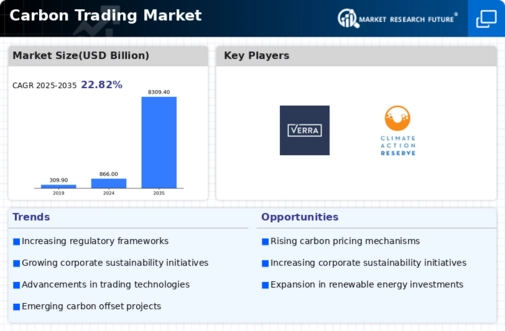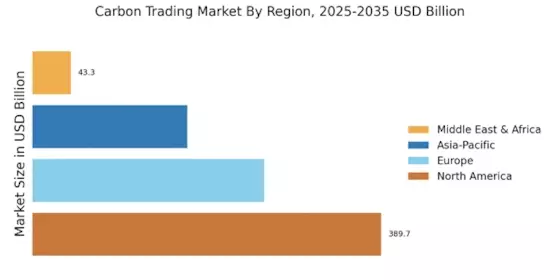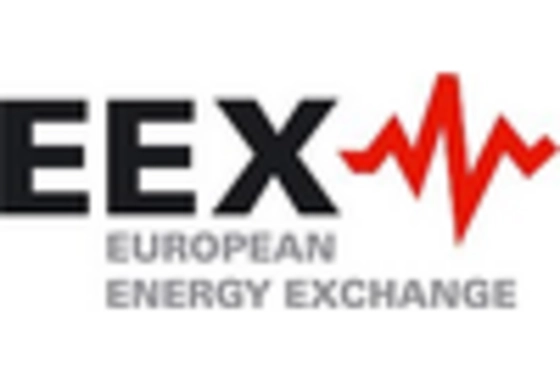The Carbon Trading Market is currently characterized by a dynamic competitive landscape, driven by increasing regulatory pressures and a global shift towards sustainability. Key players are actively engaging in strategies that emphasize innovation, partnerships, and regional expansion to enhance their market positions. Notably, companies such as the European Energy Exchange (DE), Intercontinental Exchange (US), and Verra (US) are at the forefront of these developments, each adopting unique approaches that collectively shape the competitive environment. The European Energy Exchange (DE) focuses on expanding its trading platforms to accommodate a broader range of carbon credits, while the Intercontinental Exchange (US) is enhancing its digital infrastructure to facilitate more efficient trading processes. Verra (US), on the other hand, is concentrating on the verification of carbon credits, ensuring that their integrity meets the growing demands of investors and regulators alike.
In terms of business tactics, companies are increasingly localizing their operations and optimizing supply chains to respond swiftly to market demands. The Carbon Trading Market appears moderately fragmented, with a mix of established players and emerging firms vying for market share. This competitive structure allows for a diverse range of strategies, as companies leverage their unique strengths to capture opportunities in various regions. The collective influence of these key players is significant, as they set industry standards and drive innovation through their respective initiatives.
In August 2025, the Intercontinental Exchange (US) announced a partnership with a leading technology firm to develop an AI-driven platform aimed at enhancing trading efficiency and transparency. This strategic move is likely to position the company as a leader in the digital transformation of carbon trading, potentially attracting a new wave of investors who prioritize technological advancements in their trading activities. The integration of AI into trading processes could streamline operations and reduce transaction costs, thereby enhancing overall market liquidity.
In September 2025, Verra (US) launched a new initiative to expand its carbon credit verification services into emerging markets, particularly in Southeast Asia. This expansion is strategically important as it aligns with global efforts to increase carbon offset projects in regions that are often overlooked. By establishing a presence in these markets, Verra not only diversifies its portfolio but also contributes to the global carbon reduction goals, thereby enhancing its reputation and market share.
Furthermore, in July 2025, the European Energy Exchange (DE) introduced a new trading product focused on renewable energy certificates, which complements its existing carbon trading offerings. This initiative reflects a broader trend towards integrating renewable energy solutions within carbon trading frameworks. By diversifying its product range, the exchange is likely to attract a wider array of participants, including those focused on sustainability and corporate social responsibility.
As of October 2025, the competitive trends in the Carbon Trading Market are increasingly defined by digitalization, sustainability, and the integration of advanced technologies such as AI. Strategic alliances are becoming more prevalent, as companies recognize the value of collaboration in navigating the complexities of the market. Looking ahead, competitive differentiation is expected to evolve, with a notable shift from price-based competition to a focus on innovation, technological advancements, and supply chain reliability. This transition underscores the importance of adaptability and forward-thinking strategies in maintaining a competitive edge in the rapidly changing landscape of carbon trading.


















Leave a Comment